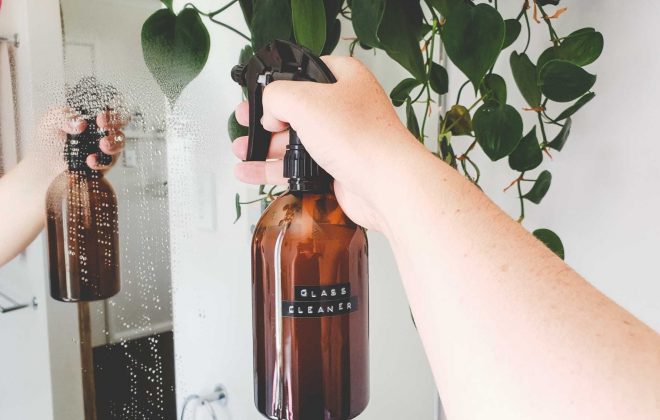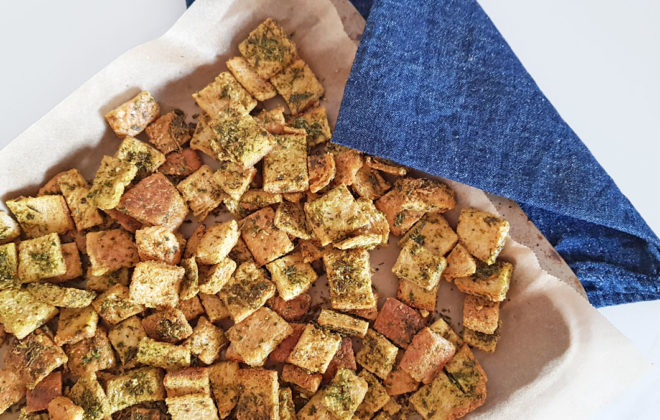How to Make Nourishing Bone Broth – Practically For FREE!
A great way to stretch the household budget is to learn how to make nourishing bone broth – practically for free!
**This blog is an old one I found from back before we were primarily a plant-based family. But I felt it should still be shared as it is a really handy way to save some money and make the most of those grass-fed and organic meats. We still use our veggie scraps though and just make vegetable broth**
This healthy living gig can start to hurt the purse strings if your not careful, especially if you are eating organic where you can. To reduce how much your spending you need to make the best use of as much as you can. A great way to do this is to save your bones and vegetable scraps and turn them into bone broth or stock.
Bone broth is extremely nourishing and healing. It contains amino acids that increase immunity, stimulate muscle protein synthesis and fights inflammation. It supplies your body with essential minerals needed for healthy bones and is fantastic for gut health which is essential for a wide range of functions that science is still uncovering, including mood, food cravings and weight loss. Bone broths also contain gelatine which also has many beneficial functions in the body. You can read more on those benefits in my Gut loving fruit jelly post.
Start collecting your vegetable, herbs and bone scraps and freeze them in containers, adding more over time, until you have enough to make a broth. How much you need will depend on the size of the pot you have available. I keep our chicken, beef and lamb bones separate so you can make chicken, beef and lamb broth respectively, but I just throw all my vegetable and herbs scraps in together.
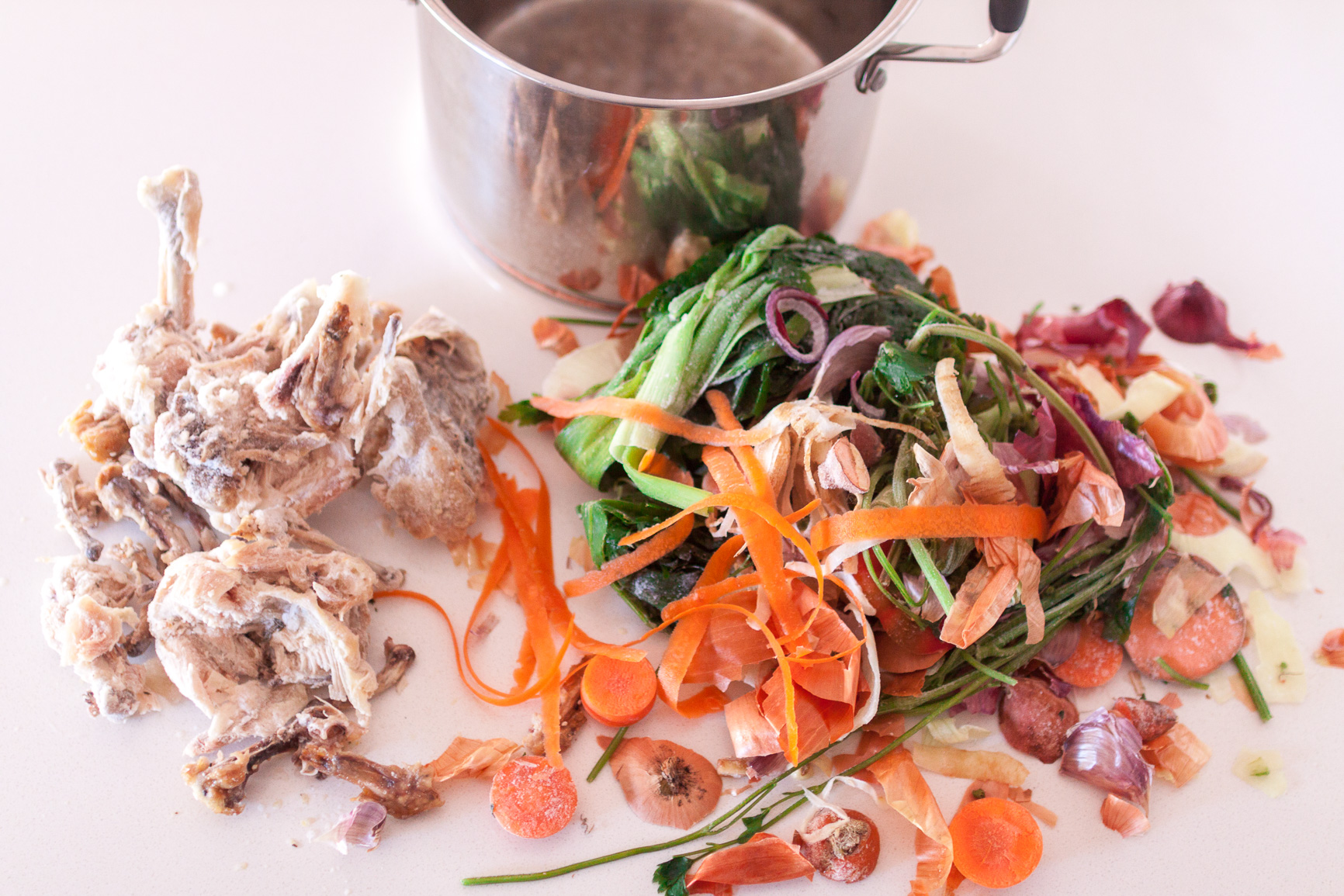
The vegetable scraps you can save to use for stock include onion, garlic and potato offcuts and skins, carrot tops and peelings (if you ever bother peeling, I rarely do as a lot of the nutrients are in the skin or immediately beneath it and contain a large concentration of nutrients), celery leaves and bottoms, mushroom stems, and zucchini offcuts, leek tops and bases. Pretty much anything except cruciferous vegetables such as cabbage, broccoli, and kale as they can make the broth bitter. If I find anything in the fridge that needs using but I won’t get to it I put that in the freezer for broth too.
I would encourage you to use bones from grass fed/pasture raised and organic animals where you can as toxins and heavy metals such as lead can accumulate in the bones of animals and you don’t want those nasties in your broth. Good quality meat can be expensive. To reduce the pain at the cash register we have reduced the number of meals that include meat, and we make the most of the purchase by saving all the bones and cartilage etc. Yes, we keep them even after we have chewed the last scraps of deliciousness we can get from them. After they have simmered for a few hours you won’t know the difference. Waste not want not.
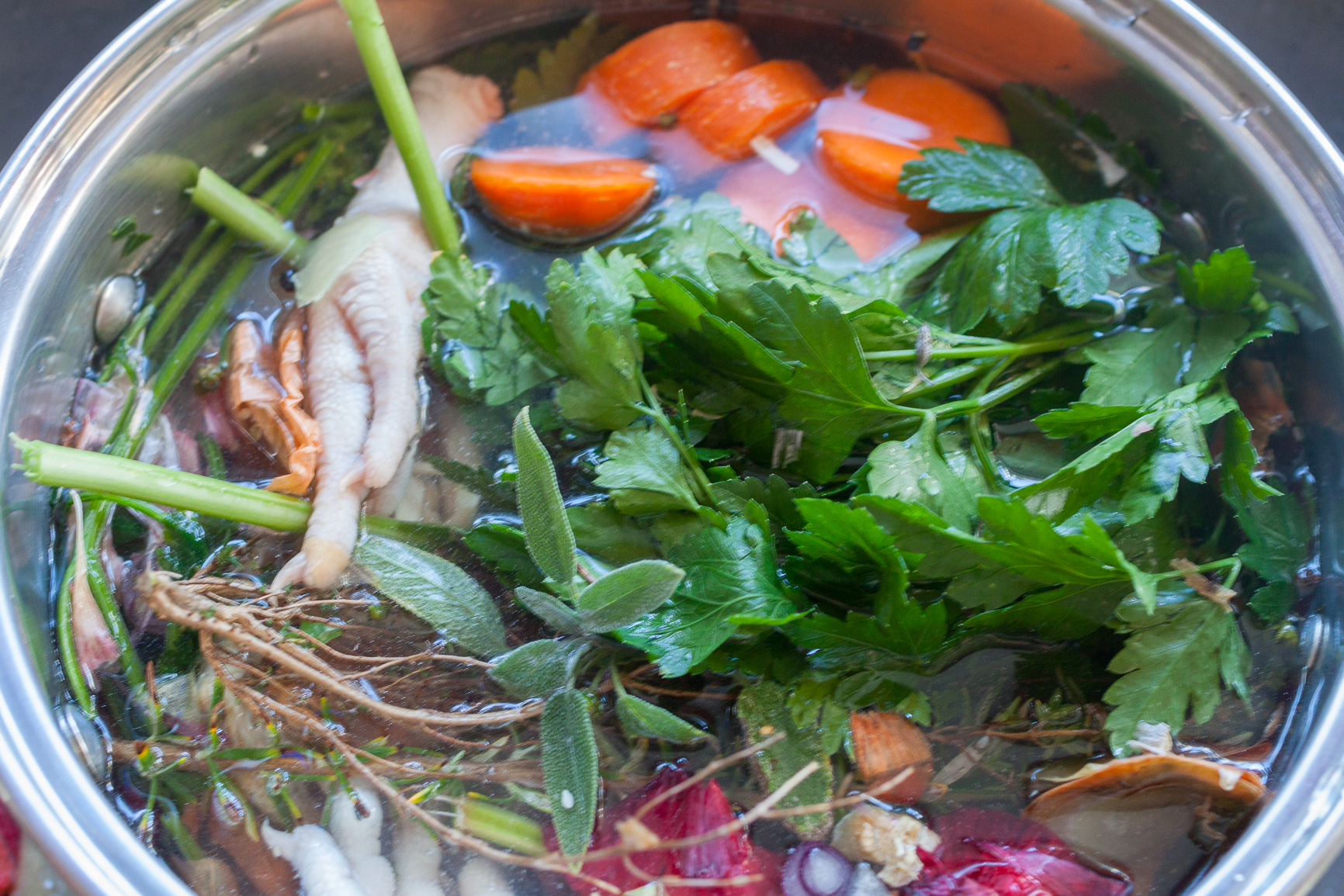
How long you cook the broth can vary depending on personal preference or your gut health. Long cooking times for bone broths can lead to it becoming high in glutamates. Some people may react to glutamate, if you find you are one of them try starting out with meat broths first. For more info on this look into the GAPS protocol.
If you are one of the unlucky 1% of the population that has issues with histamine in foods you should also be wary when consuming broths, freeze it immediately (histamines increase over time) and don’t cook it too long. If you don’t have any issues with histamine or glutamates Chicken bones can cook for 24 hours, beef bones can cook for up to 48 hours. I generally only cook my chicken broth for 1-3 hours and other broths 6-10 hrs.
Slow cookers work a treat for cooking stocks but make sure you use one with a low tox ceramic insert as some can contain lead in the coating and clearly, any chemicals in non-stock coating versions would not be great in your broth either.

Bone broths can be used in so many ways:
- sautéing vegetables
- as a base in soups and stews – like my yummy Osso Bucco Soup
- stock replacement
- sauces and gravies
- cooking rice or quinoa
- Drink on its own
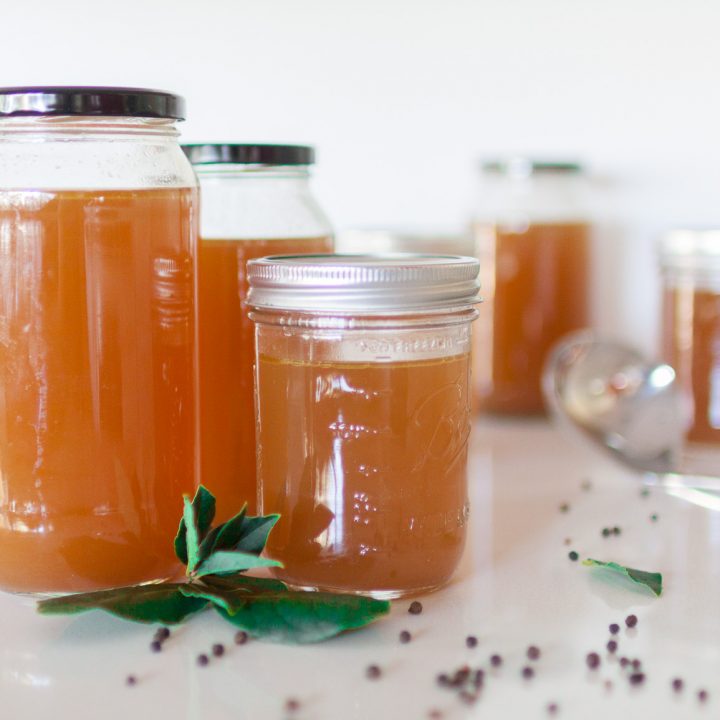
Scraps Bone Broth
A great way to stretch the household budget is to make nourishing bone broth - practically for free!
Ingredients
- Vegetable & Herb scraps
- Bone scraps
- 2-4 Tbsp Apple Cider Vinegar (helps exact minerals from the bones)
- 3 bay leaves
- 1 Tbsp Peppercorns
- Assorted Herbs (if not many in the scraps already)
- Chicken feet, pigs trotters (optional)
- Water (preferably filtered)
Instructions
- Keep seperate bags in freezer to collect vegetable and bone scraps until you have enough to make a broth.
- Place the bones and vegetable scraps in a large pot or slow cooker along with a few chicken feet or a pigs trotter or two (if using) and cover with cold water.
- Add apple cider vinegar, bay leaves, herbs and peppercorns and let sit 30-60 minutes
- Cook on high heat until gently boiling then turn to a low gentle simmer for the desired amount of time. (Chicken up to 24 hrs, beef, lamb and pork up to 48hrs)
- Skim off any scum that may surface, particularly towards the start of cooking.
- Once cooked for your desired time strain (I use fine mesh strainer lined with muslin for a more clear stock) and store in glass jars in the fridge or freezer.
Notes
- Chicken feet and pigs trotters are a great way to get extra gelatine in your stock and achieve that luscious stock "wobble" when it's cold.

DID YOU MAKE THIS RECIPE?
Tag @blooming.mandala on Instagram and hashtag it #bloomingmandala.



